
Earlier in this series I talked about changing the conversation. Most of us in the west would always associate China with counterfeit products, even though they also produced most of the authentic goods the world consumed. It was a heck of a thing to have praise for the product, but disdain for the country producing it. Michael Lau was raised in Hong Kong, a nation with one foot in the East, and West. Because of this distinction he absorbed, and remixed western culture in a new, and exciting format; the vinyl figure. When his contemporaries followed suit I didn’t have much respect for what they were doing because they were retreading the same idea. But I took a step back, and acknowledged that they were not all cash grabs, many of these creators were also celebrating the new art form.
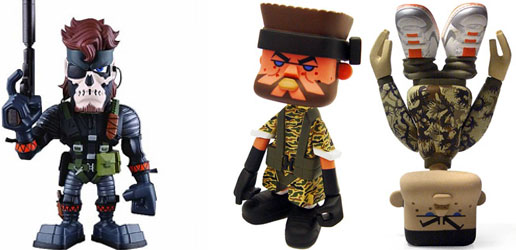
In the early days artists followed along with what Lau was doing, essentially making street fashion character toys, whether they were stylized 12-inch figures or squat 6-inch collectables. They were almost all universally variations on a skater kid, or a Hip Hop kid. Then other studios like Brothersfree demonstrated that figures could be made out of industrial workers, robbers, or even clowns. The doors had been blown open. The best designers like Jei Tseng Studio were able to remix cartoon stars, video game characters, mythological heroes, basketball players, and even superheroes into something new, and unique. Comic book fans would be able to identify right away who some of the Street Mask series figures were just by looking at them. The four characters Ken, Ray, Derek, and Gino were inspired by the DC Justice League characters Superman, Flash, Batman, and the Green Lantern respectively.
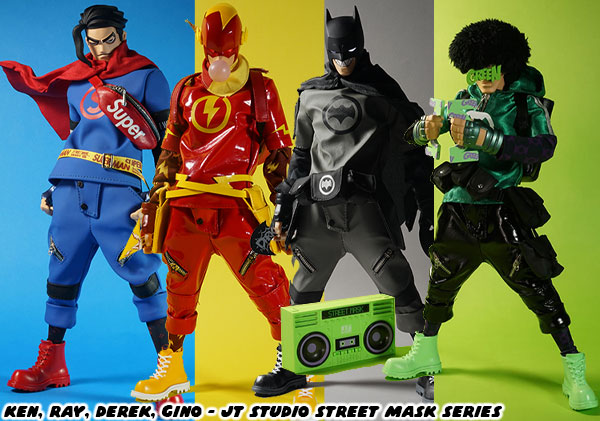
Yet these figures weren’t licensed from DC, nor were any of their fashion accessories licensed from similar manufacturers. The red crossbody bag on Ken was based on the SUPREME bag, but the matching font said SUPER instead. The studio was able to create something unique by layering multiple levels of detail, and meaning on their figures. This was whether they were using genuine branding, or a remixed logo. JT Studio understood the assignment. This trend had been happening for generations, not just in figure art, but all of the creative arts. In the 20th century millions of musicians jumped on the rock, punk, new wave, and Hip Hop sound after they first heard the music. We wouldn’t have had the Bauhaus, Modern Classical, Art Nouveau, or Art Deco movements unless it the form had also been embraced by millions of creators. Yes there were some derivative artists, but there were many fresh voices that helped propel the various formats forward.
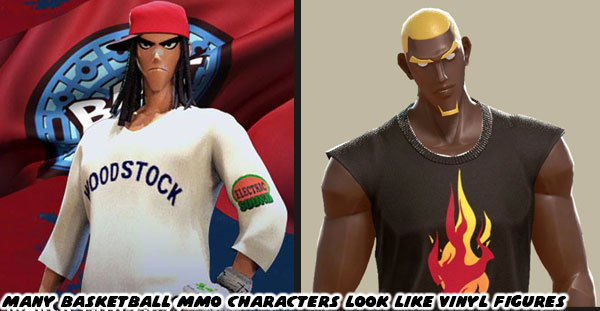
The creators from Hong Kong, and China
were remixing culture in real time. They were mashing together fashion, movies, music, cartoons, comics, and toys. Taking the elements that worked from different formats, and seeing how it would look in a figure, or game, or model. It was something that they had been accelerating at all through the ‘90s. In fact they were remixing, a remix before it even got a chance to catch on. This allowed the designs of urban vinyl figures to influence game character designs, and vice versa. I had talked about many of the biggest streetball MMO’s in previous entries of the series. JC Entertainment released FreeStyle Street Basketball, Freestyle2 Street Basketball, and 3on3 Freestyle Basketball. Beijing Halcyon Network Technology Co., LDT released Dunk Nation 3x3. All9Fun released Basketrio: Allstar Streetball.
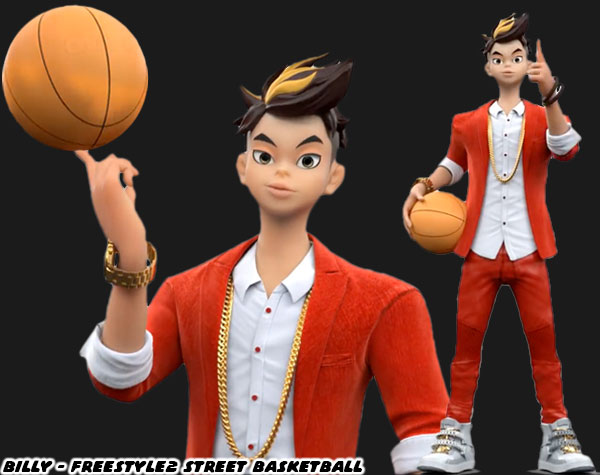
The designs in each basketball MMO were fairly well done. They pulled heavily from the stylized proportions of urban vinyl figures. Billy for example, the character pictured above looked like a vinyl figure I would have collected. The proportions of the 3D model, the style of his hair, gold jewelry, and designer sneakers certainly told a story. Streetball players in the real world all had their own distinct personalities. Some were flashy, some were powerful, some were tricksters. Their look, and their style of play reflected those personalities. The games from JC Ent. made sure that the library of characters they created represented a broad cross section of society. It was something that JC did better than a lot of other studios.
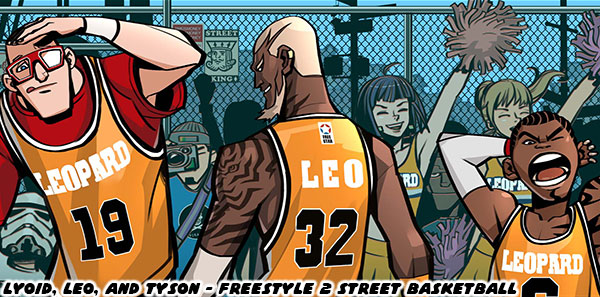
The games they had been developing since 2004 did feature a number of traditional looking male, and female basketball players. We’re talking about matching jerseys, knee gaskets, sneakers, etc. However they also had characters wearing regular street clothes, and people from all walks of life. Working professionals, inventors, mechanics, gang members, robots, and the wealthy elite. This with the case of Billy, and his rich mentors Robert, and Grace. Just because they came from wealth didn’t mean they knew nothing about the game of basketball. They were every bit as dangerous on the court as they were on the boardroom.
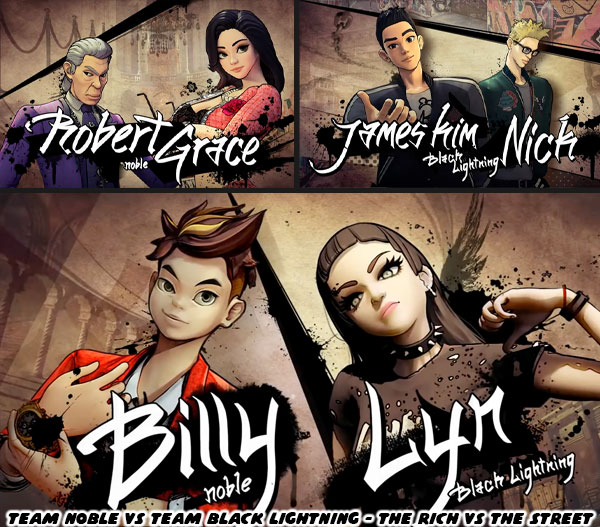
There was a tremendous amount of storytelling in Freestyle2, 3on3 Freestyle Basketball, and the other games. This came through in seasonal events, and even through the designs of the characters. When Billy made his debut so too did Team Black Lightning. The street kids were ready to take the game right to the one-percenters, and you were free to choose a side. While audiences became familiar with Saru, Jack, and Joey over the years there were technically no heroes, or villains in the universe, just different clashing personalities. The majority of the cast represented a particular subculture. Over time new teams would pop out of the woodwork. If there was something cool out there in the universe it would eventually end up in the game. For example people on both sides of the Pacific thought wuxia heroes were cool. What if there was a modern team that pulled elements from the ancient kung-fu masters? That was essentially the inspiration behind the Ace of Wulin team.
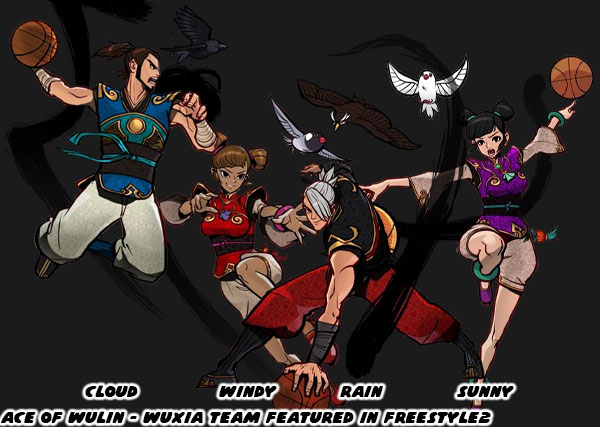
The Wulin team's special moves on offense, and defense were inspired by their martial training. The name wulin was derived from “martial forest;” the secret society of wuxia heroes from fiction. Rich people, goths, and kung-fu masters, were just some of the teams that broke up the classic pro, or even Hip Hop designs going back to NBA Street from 2001. The studios weren’t afraid of coming up with designs that might work in a stand-alone science fiction adventure. Some characters like the cyberpunk mascot named Zero could transform into his armored alter ego with boosted stats. This sci-fi monster had no connection to basketball. I’d be lying if I said that the design didn’t go hard, and wasn’t someone that fans were eager to try.
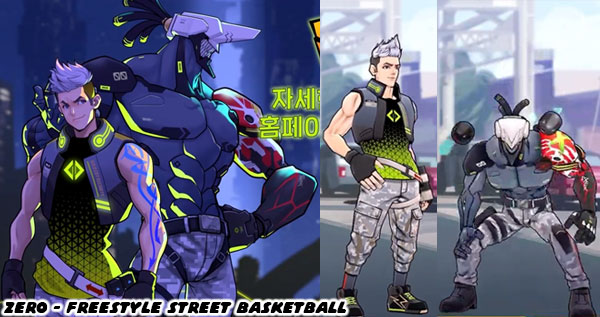
Not every entry had some level of forethought. Sometimes the studios would just fit pop culture characters, or celeb look-alikes into the game. Not that it made sense to just give the Jared Leto version of the Joker from the Zack Snyder DC universe movies a basketball. Or say give the enigmatic guitarist Buckethead a basketball. Yet those characters, or rather ballers inspired by those characters ended up in Dunk Nation 3x3. Fans of pop culture that understood the reference appreciated these weird designs getting inserted into their favorite game. It was certainly an easy way to fill out a roster of recognizable faces without paying for a license. Speaking of putting in non-traditional, high-profile characters in a streetball game… what if the developers put fighting game icons into their titles? The designers at All9Fun placed several characters that were heavily inspired by Capcom, and SNK’s biggest stars in Basketrio. Of course they got away with it by changing the names, and details just enough so they wouldn’t get a cease and desist letter.
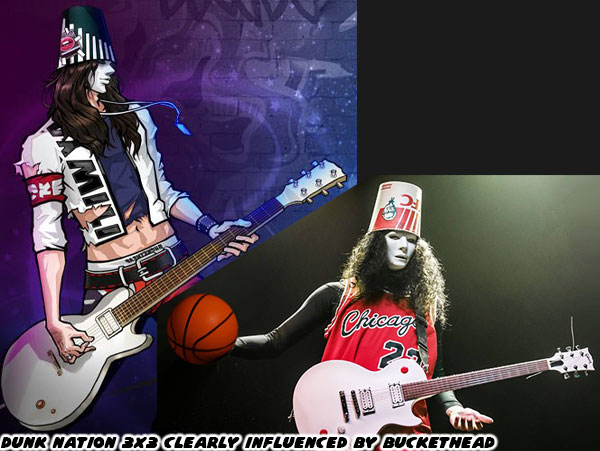
These were examples of the remix culture that I was talking about. After adding all sorts of traditional basketball, and streetball archetypes, the studios then started populating their worlds with unique figures. When they couldn’t think up new designs they instead starting asking “what if?” and found ways to incorporate musicians, actors, comic book characters, sci-fi, or fantasy heroes. The designers at all of the studios didn’t bother to ask for permission to use a character, or likeness in their game. They just went ahead and did it. Like the old saying goes “It’s easier to ask for forgiveness, than to ask for permission.” I didn’t think it was a good look to poach the designs of Street Fighter, or King of Fighters characters. I appreciated the hustle, but at least JC Entertainment bothered to create an original wuxia team without just copying from a Japanese developer.
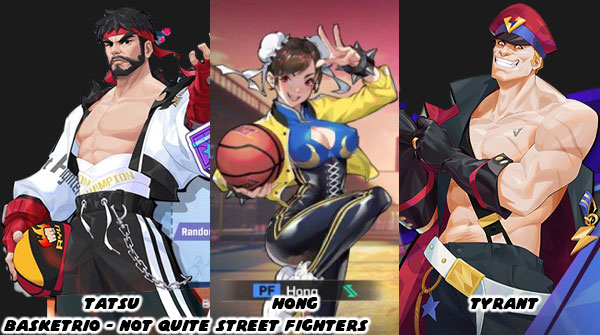
Of all the remix figures that I enjoyed, at least for this genre, were the ones based on actual basketball players. After all they made more sense than comic book superheroes in a streetball game. The way these icons were remixed was what amazed me as an artist. I’d like to explore it a little bit more in the next blog. Until then I’d like to know if there was a character in an MMO that you thought looked cool enough to be featured in a stand alone game. Or if you knew of a character that was such a blatant rip off that you couldn’t believe the publisher wasn’t sued. As always if you would like to sponsor me
please visit my Patreon page and consider donating each month, even as little as $1 would help make better blogs and even podcasts!






















No comments:
Post a Comment